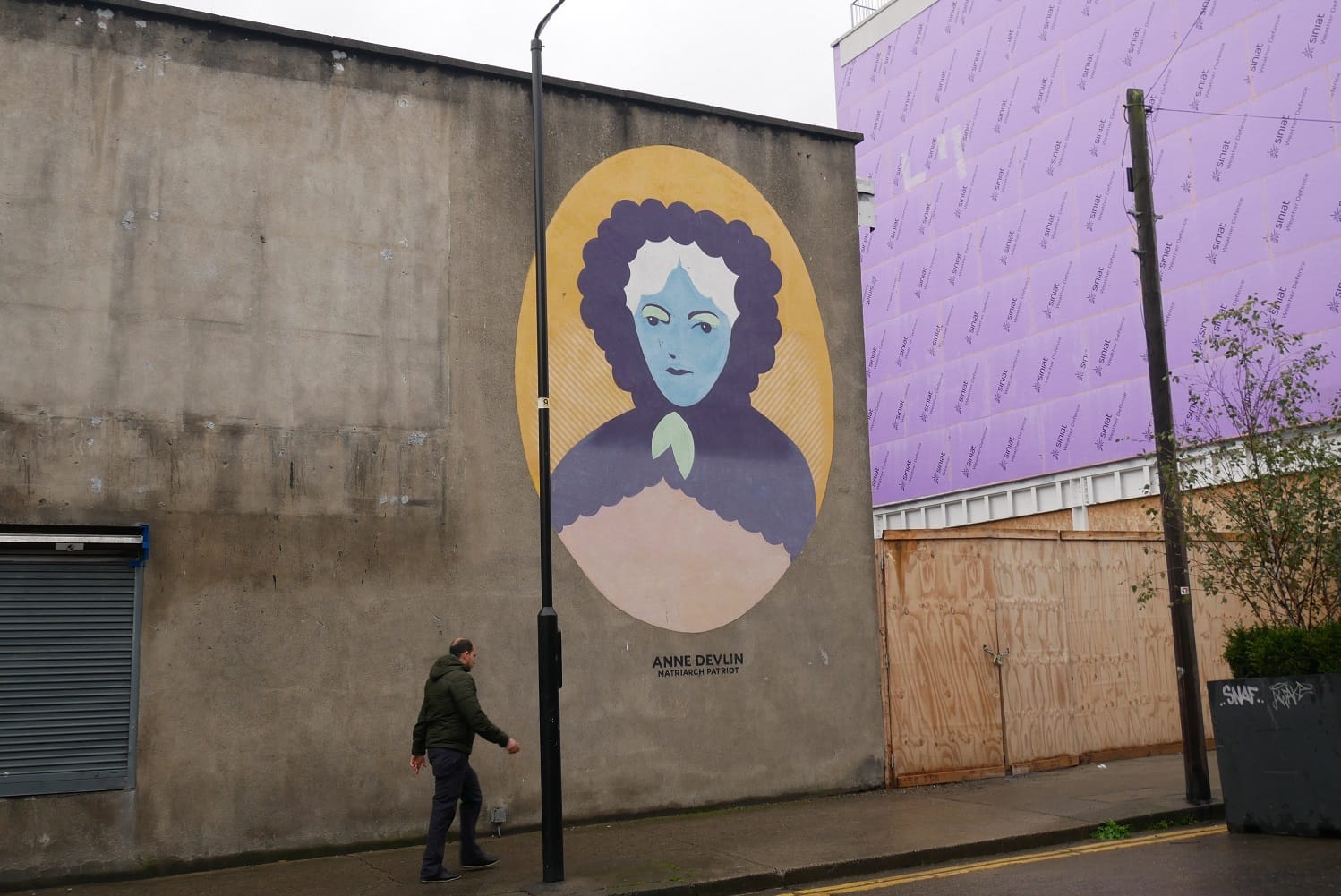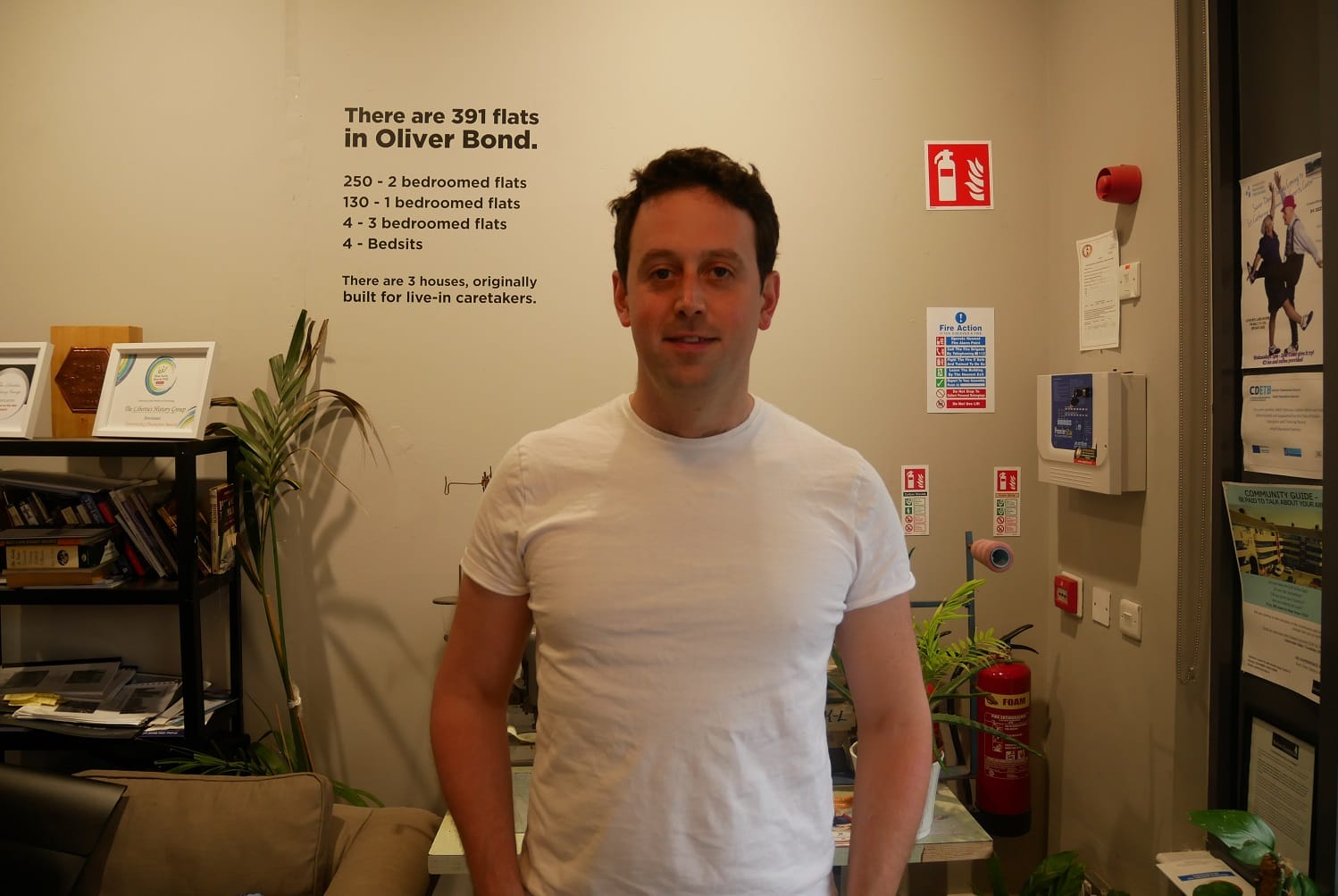What’s the best way to tell area residents about plans for a new asylum shelter nearby?
The government should tell communities directly about plans for new asylum shelters, some activists and politicians say.
The idea came from discussions with others in the community, said Austin Campbell, director of the Robert Emmet CDP. “How do we define ourselves when this is happening?”

Anthony O’Brien Freeman stands at the rear of the portico on the old Coombe Hospital site in the Liberties, and reads out the names engraved on the back steps of the structure.
There’s the well-known Bang Bang, aka Thomas Dudley, who used to pretend to shoot at people with a key, as he uttered his famous catchphrase.
But there’s also Houdini, Damntheweather, Jembo No Toes, and Soodlum.
“Houdini was a bloke that any time his wife asked him to go anywhere, that’s the last she’d see of him for a few days, he was so drunk,” he says.
Soodlum, was a man who dressed “like Napoleon” with a big hat and boots, who would walk around with a sword in front of him, he says.
O’Brien Freeman is working to memorialise some of these local characters further, he says – in sculptures of stone clay that he intends to display in an upcoming exhibition on the area, called “Our Liberties”.
It’s part of a project being run by the Robert Emmet Community Development Project (CDP) to use art to channel concerns about wider developments in the area with an exhibition, books, and workshops too.
The idea for the art exhibition came from discussions with others in the community, said Austin Campbell, director of the Robert Emmet CDP.
“Art is a good channel for community energy,” he says. “Especially when there are concerns about things like development and about how do we define ourselves when this is happening.”
The exhibition will be held in the Robert Emmet CDP on Usher Street and will spread out to other businesses and community spaces in the Liberties, but Campbell says they’re currently teasing out which ones.
Over the next few months, the Robert Emmet CDP is planning a series of workshops and classes. There’ll be a photography class. Then people will go on a walk-about around the area.

“They’ll take five photos that capture an element of the Liberties or their lives there that have some sort of meaning,” Campbell says.
The classes will run for eight weeks, says Campbell. After that, their five photos will form the photographic part of the exhibition.
There’s also an audio archive planned with stories and interviews from local groups, like the Liberties women’s history group that meets every Wednesday.
Audio technician and music producer Ken McCabe will record interviews with local groups, too.
“As well, we’ll have a photograph of each of the people interviewed,” says Campbell. “We’ll transcribe a 400- or 500-word piece. Then we’ll have a little book that will be published at the end of it as well.”
The Robert Emmet CDP will also have an artist come in once or twice a week to give classes too, he says. In December, they hope to publish a colouring book as well.

Campbell says the idea was inspired by the Drawing Dalymount project, where a series of drawings of the Phibsboro football stadium and its significance to the local community was depicted in a colouring book.
“They all sat down in Dalymount and drew whatever aspect of it they liked and had it published as a colouring book that was for sale,” he says.
Campbell says they’re toying with the idea of painting a mural as well – if they can find a suitable location and get permission from Dublin City Council.
Campbell says there’s a feeling of hopelessness that comes from recent developments in the area. “There might have been family businesses there or organisations for the community there.”
This exhibition is an “indirect response” to the construction of student accommodation and hotels, he says.
Says Campbell: “A lot of people are coming in and saying this community is changing.”
It’s the reason why they started to train local tour guides to run tours, former director Máirín Ó Cuireáin said last year.
“This is a way of capturing memories of [the area] and archiving it and bringing a voice to people to say what ‘their Liberties’ is,” says Campbell.

The area is becoming “sterilised”, says O’Brien Freeman, a life-long resident of the Liberties who grew up in the nearby Oliver Bond flats.
“It’s the people that made the Liberties special,” he says. “It’s not buildings. It’s the street traders, the way everybody knows each other.”
O’Brien Freeman says working at the community centre helped reignite his love of art. “I hadn’t done art in like 10 years. I used to just draw. I always had the opinion someone like me wasn’t going to be able to do something like that,” he says.
He’s hoping to have his 10 sculptures done by December. “I’m going to use them for my portfolio to get into art college too,” he says.
On Friday, he’s got the Hairy Lemon with him, his first sculpture. The Hairy Lemon is a character from outside the neighbourhood, who had jaundice and was a dog catcher.
The next few though, O’Brien Freeman says, are going to be based on local people.
O’Brien Freeman pulls out his phone and shows an oil painting he did recently, a colourful scene of street traders with their stalls and a dishevelled man in dark clothing in the bottom left corner.
“That’s Greybeard,” he says. “He was a homeless fella that used to sleep at the back of the flats. He slept there for about ten years. He died about two or three years ago.”
Says O’Brien: “He was an abusive old man, but he was part of the community. He was well-loved but he was grumpy. He’d call you all sorts.”
Right now, he’s trying to figure out how to sketch Jembo No Toes, a World War I veteran.
O’Brien knows the stories are grim, he says. But he’s happy to pass them down to his children.
“They’re all tragic stories but I like telling my kids because you can learn something about people with differences,” he says.
“Most of the street characters you hear of have some sort of a mental illness or something like that,” he says.
But, he says, people took to them and looked after them. “There’s a lot to learn from those stories.”
People in the Liberties can get involved by emailing Austin Campbell at austin@recdp.ie or dropping in to the centre.
Get our latest headlines in one of them, and recommendations for things to do in Dublin in the other.